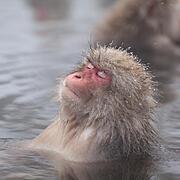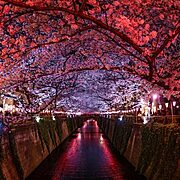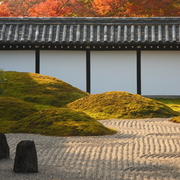The word “Teien” is a relatively new word which came to be used popularly since the middle of the Meiji period(1868-1912).
According to one theory, the word was first introduced as the translation of the English word “garden” by Keijiro Ozawa, the modern landscape gardening researcher.
Generally, “Nihon Teien”, “Wafu Teien” or “Nihon-shiki Teien” specifies the gardens which called as “Niwa” and “Sono” among those of “Teien”, and ones with the uniquely formed style in Japan over its long history.
“Nihon Teien” mainly consists of a pond situated at the center, “Tsukiyama (an artificial mountain)”, and variously combined stones, which aims to symbolically reproduce a landscape of nature.
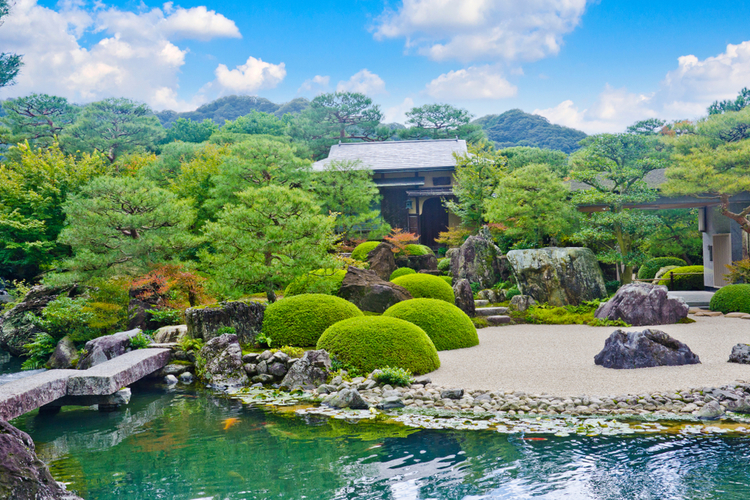
Its history has been deeply influenced by religious ideas introduced from the continent such as Pure Land Buddhism and Zen.
Each period had its different operators and uses along with social changes.
Since “Nihon Teien” has developed in various ways for a long time, it is quite hard to define the proper concept of it.
“Nihon Teien” with various styles
What kind of scene comes across with the word “Nihon Teien” first?
Many of you, mostly Japanese, may list “Kenroku-en” in Kanazawa-shi, Ishikawa, one of the three great gardens of Japan, famous for its huge pond and colorful trees in mountains.
“Byodo-in” Temple’s “Ho-o-do” hall in Uji-shi, Kyoto, known for the model design of Japanese 10-yen coin, can not be described without surrounding “Aji-ike” pond, Uji-river and mountains.
The rock garden of “Ryoan-ji” temple in Kyoto-shi, Kyoto, famous for “Toranoko-watashi”※, is widely known in the world.
※Toranoko-watashi – Crossing of tiger cubs: Meaning struggles with living by the situation that a tiger has difficulties with crossing over a river with its cubs as one of its cub is a leopard that tries to eat other two when a tiger give birth to three.
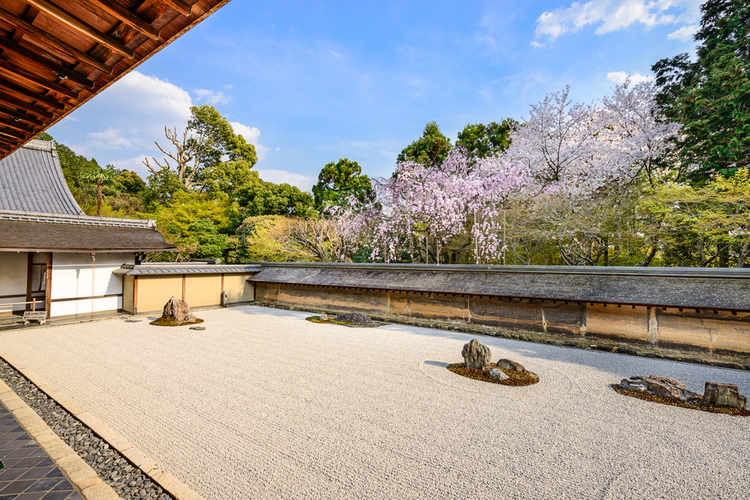
These three “Nihon Teien” show its different characteristics. While “Kenroku-en” is 11.7 hectares, the rock garden of “Ryoan-ji” temple is 25 meters wide and 10 meters long, which is almost the same size of a swimming pool of Japanese general elementary school.
As for its buildings, the garden of “Byodo-in” temple is designed mainly with the building of “Ho-o-do” hall, whereas “Kenroku-en” with gardens and buildings for viewing.
In addition, although both gardens in “Byodo-in” temple and “Ryoan-ji” temple are located inside them, you view its garden, from outside with the sight of the temple in “Byodo-in” temple, and from inside of the temple in “Ryoan-ji” temple.
“Nihon Teien” has each structure in each time, however, those constructed in the same period show certain common styles.
For example, mentioned three gardens are categorized to “Daimyo Teien” for “Kenroku-en” in the Edo period(1603-1867), “Jyodo (Pure Land)-style Teien” for “Byodo-in” temple in the middle of the Heian period(784-1185), and “Karesansui” for the rock garden of “Ryoan-ji” temple in the Muromachi period(1336-1573).
The knowledge of each constitution and history of “Nihon Teien” with various characteristics will help you understand it more deeply.
The history and culture of “Teien”
The following is a brief summary of “Nihon Teien” history.
① The capital and “Teien” (Asuka period(end of 6AD-7AD) – Nara period(710-784))
Since no ancient “Teien” exists, its appearance can be estimated only by excavation investigations and documents analytics.
Ancient “Teien” was designed with references of garden making in the continent such as that of Sinra (current Korean peninsula) in the Asuka period and to in the Nara period.
② ”Teien” for the aristocracy in the Heian period (784-1185)
In the Heian period, many “Teien” were made paired with the aristocracy’s houses called “Shinden-dsukuri”.
Also, the “Jyodo (Pure Land) Teien” styled “Teien” were widely constructed to embody the Pure Land Buddhism ideas popular at that time.
③ Zen and “Teien” (Kamakura period (1185-1333)– Muromachi period(1336-1573))
The spread of Zen-shyu from the continent developed the garden culture based on Zen lessons.
Zen-shu was popular especially among the warrior class and Zen-influenced “Teien” were made across Japan.
④ Tea and “Teien” (Sengoku period(1467-1573)) – Azuchi Momoyama period(1568-1600))
Along with the culture of tea popular in the Azuchi-momoyama period, the garden called “Roji”, which is designed for tea room, was produced.
The popularity of tea made “Teien” familiar with ordinary people.
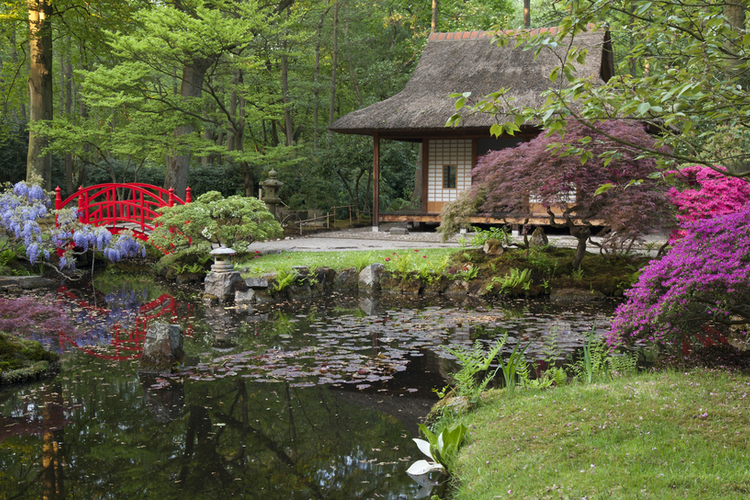
⑤ ”Teien” for Daimyo (Edo period(1603-1867))
“Teien” came to be used for the rites of warriors.
A big-scale “Daimyo Teien” surrounded with great scenery was established with the style combined the function of the place for the rites and the ideas of Zen-shu:Zen Buddhism.
⑥ Modern “Teien” (Meiji period(1868-1912) to the present)
After Meiji restoration, “Teien” was popular as a second house of the aristocracy.
As the comparison with the West, “Nihon Teien” got redefined, which revised its techniques and history.
Components of “Teien”
Although each period had different components, the below is the main.
W ater
Water is essential for “Nihon Teien” to reproduce the scenery of nature.
Water of “Nihon Teien” changes its form in various ways, such as a spring, a stream along a landform, a pond bringing stillness.
M ountain
“Tsukiyama” means an artificial mountain in a garden.
“Nosuji” presents natural landscape by gentle slopes.
I shigumi (Rock forming)
As you see from the fact that the mentioned “Sakutei-ki (Garden making book)” starts with description about rock forming, this is one of the most essential components.
There are various patterns of it.
P lant
Various plants in each season are used, such as a pine, a maple, a willow, an ume(Japanese apricot), a cherry tree, azalea, rose and so on.
B uilding
Not only a hall of a temple, but “Izumidono (a house with a spring)” on a pond, a harbor, a bridge over a pond, function importantly for “Nihon Teien”.
“Sakutei-ki”, the oldest book about garden making in Japan, has the following passage.
“Someone says, forming mountains, water and rocks needs deep mind.”
Each part of garden making requires “deep mind”, on forming mountains, water stream, and rocks.
The profoundness of “Nihon Teien” represents traditional Japanese mind itself.


